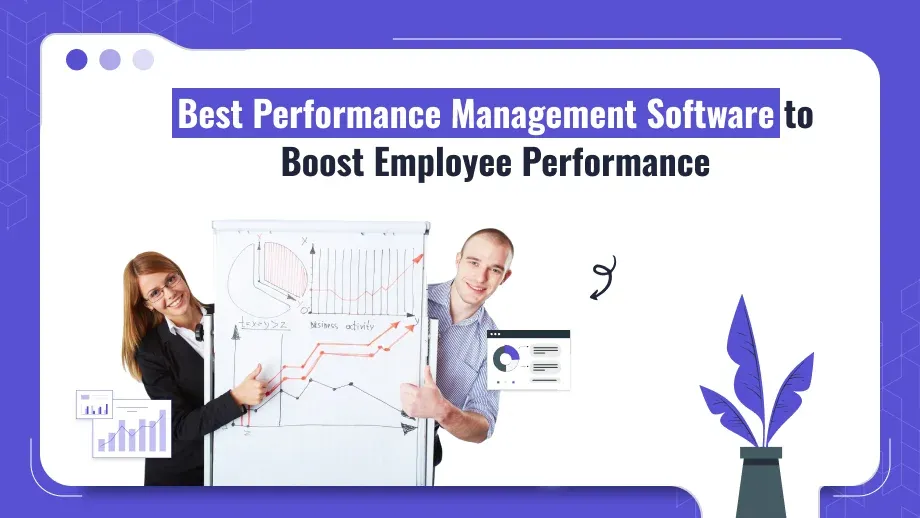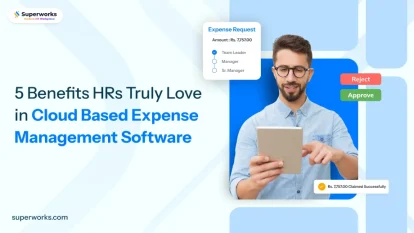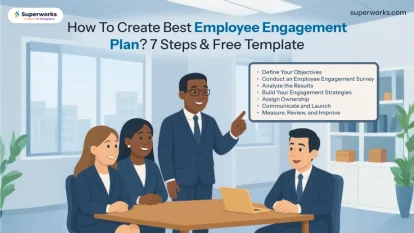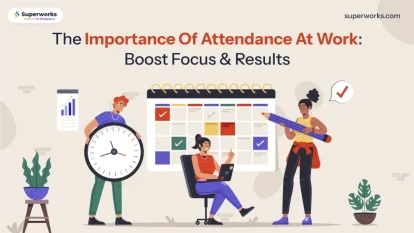
Many companies face this problem and the solution is in the tools. Employee performance management is tracking, evaluating and improving employee performance to company goals. Modern performance management extends beyond annual reviews; it encompasses ongoing feedback, goal establishment, and personal growth. In this article, we will explore the Best performance management software tools that can assist in managing and enhancing employee performance. Whether your aim is to optimize feedback processes or to define clear objectives for your team, selecting the appropriate tool can significantly impact your success.
What is Software for Managing Employee Performance?
Key features of employee performance management software:
- Goal Setting: Align individual employee goals to company goals. So everyone is working towards the same targets.
- Ongoing Feedback: This software enables managers to provide immediate feedback to employees, facilitating continuous improvement throughout the year rather than relying solely on annual evaluations.
- Performance Evaluations: The implementation of automated review cycles streamlines the process, enhancing both speed and organization.
- Analytics and Reporting: See employee progress and make data driven decisions.
- Development and Training Tools: Create personalised development plans for employees based on their performance and skill gaps.
By using software that’s focused on continuous improvement and real-time data companies can stay ahead and create a growth culture. This benefits the employees and drives better business results.
The Importance of Employee Performance Management Software for Organizations
Keeping track of how employees are doing can be pretty tricky and takes a lot of time. Traditional approaches like yearly reviews or casual catch-ups often fall short. This is where employee performance management software shines—it streamlines and automates the whole performance management process steps, making it way more efficient and effective.
Essential Stages in the Procedure:
- Performance Reviews: Performance management software automates the review process. Whether it’s quarterly, bi-annual or annual the software ensures reviews are structured and data driven.
- Progress and Development: One of the most important steps in the process is tracking employee progress. The software helps track goals, feedback and performance metrics so managers can see where employees can improve or need support.
- Training and Development: Based on performance data managers can see skill gaps and recommend personalised development plans for each employee.
Why It Matters:
By following these performance management process steps you can maintain high employee engagement and productivity. When employees have clear goals and regular feedback they perform better and businesses get better results.
Empower Your Team’s Growth – Try Our Performance Management Tool!
Track, evaluate, and boost employee performance with ease.
Features of Performance Management Software
The elements that will most affect your team should be your primary consideration when selecting performance management software. The performance management process is made simpler and productivity is raised with a good instrument. Here are the top features to consider:
- Goal Setting and Alignment
A quality performance management tool enables you to establish clear objectives for staff members and match them with corporate objectives. Employees get a feeling of direction and purpose as a result of everyone working toward the same goals. - Continuous Feedback
Feedback shouldn’t be a yearly occurrence; it should be a component of the performance management process. Look for software that allows real-time feedback. So employees can adjust and stay on track throughout the year. - Automated Performance Reviews
Manual performance reviews are inconsistent and time consuming. An organized, prompt, and equitable evaluation process is guaranteed by automated reviews. Depending on the requirements of your business, the software should allow for quarterly, bi-annual, or annual review cycles. - Employee Development and Training
Part of performance management is identifying skill gaps and providing the right development opportunities. The best software has tools to create personalised development plans for employees and access to training resources and coaching. - Analytics and Reporting
To make data driven decisions you need access to performance data. A good software will have analytics features to track performance trends, see top performers and highlight areas for improvement. Detailed reports so managers can act on real insights not gut feelings. - Integration with Other Tools
Your performance management software should integrate with other HR and business tools like payroll systems, employee engagement tools and project management platforms. This integration means all processes work together and reduces manual work and increases efficiency.
By focusing on these features you can choose software that supports your overall performance management process and drives real improvements in employee performance.
Types of Performance Management Systems
Understanding the many kinds of performance management systems is essential when selecting the best software for your company. Since every system manages employee performance differently, the best one for you will rely on your company’s requirements.
Here are the main types:
- Annual Review Systems
This system is based on annual or bi-annual performance reviews. Employees get feedback at set intervals usually once a year. This has been the way for decades but is often criticised for being old school as it doesn’t provide continuous feedback. - Continuous Performance Management Systems
Unlike annual review systems continuous performance management provides real-time feedback and frequent check-ins between employees and managers. These are for companies that want to keep engagement high and performance throughout the year. - Goal Based Systems
These performance management systems focus on setting and tracking goals at every level—company, team and individual. They align employee goals to company objectives and update progress frequently. This is often used by businesses that rely on outcomes and metrics. - 360 Degree Feedback Systems
Employees receive input under this approach from colleagues, superiors, and even clients in addition to their bosses. This kind of performance management system is helpful for developing well-rounded development plans and provides a comprehensive view of an employee’s performance. - Development and Training Focused Systems
Some systems focus on employee growth and have tools to identify skill gaps and recommend training opportunities. These are for companies that prioritise continuous learning and want to support employee development at every stage. - Project Based Performance Systems
These systems track employee performance tool based on their project work. They’re for businesses where teamwork and project outcomes are key drivers of success so employees are evaluated on their project related achievements.
You may select a performance management system that works for your company now that you are aware of the different types of performance management systems kinds available. There is HCM software for you, regardless of whether you require ongoing input or a solution that prioritizes long-term development.
How to Select Your Company’s Best Performance Management Software
Choosing the right performance management software can be overwhelming with so many options. But focusing on your needs and business goals will help you narrow it down. Here’s how:
1. Size of Your Business and Needs
- Small businesses need simple tools that focus on goal tracking and feedback, larger businesses need more comprehensive solutions with analytics and development tools.
- What’s the size of your business and how complex are your performance management needs? Do you need something basic or a full performance management system?
2. Budget
- Make sure to assess your needs in order to avoid paying for items that you do not require.
- You may start small and add features as your business expands thanks to the scalable pricing offered by many vendors.
3. Core Features
- Make sure the software has the core features you need like goal setting, real-time feedback, automated reviews, and performance analytics.
- Think about what features are non-negotiable based on the different types of performance management systems that fit your business model. For example if continuous feedback is key to your team’s success prioritize tools that specialize in it.
4. Ease of Use and Employee Adoption
- A tool is only effective if your team uses it. Choose software that is simple to use. Use the free trials and demos that many programs offer to evaluate if the system is effective for your team.
- Adoption will go more smoothly for managers and staff if the interface is clear and easy to use.
5. Integration with Other Tools
- If you use other software like HR management or payroll systems check if your performance management software integrates with those tools. This will save time and reduce errors by having all data in one place.
- For businesses that focus on project management integration with those systems will help streamline employee performance tracking.
By following these you can choose the right performance management software for your business and budget and improve your overall performance management process.





